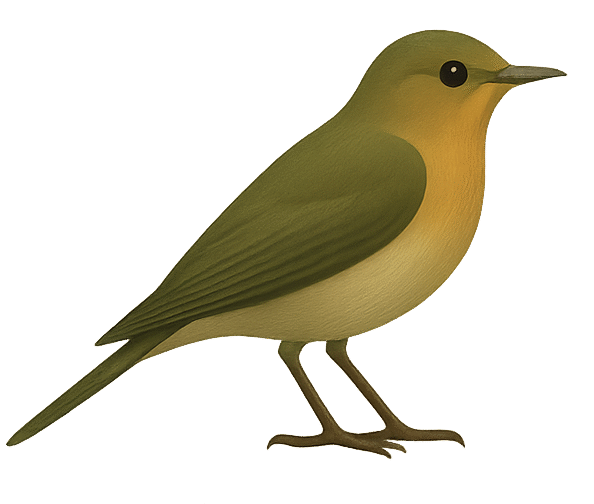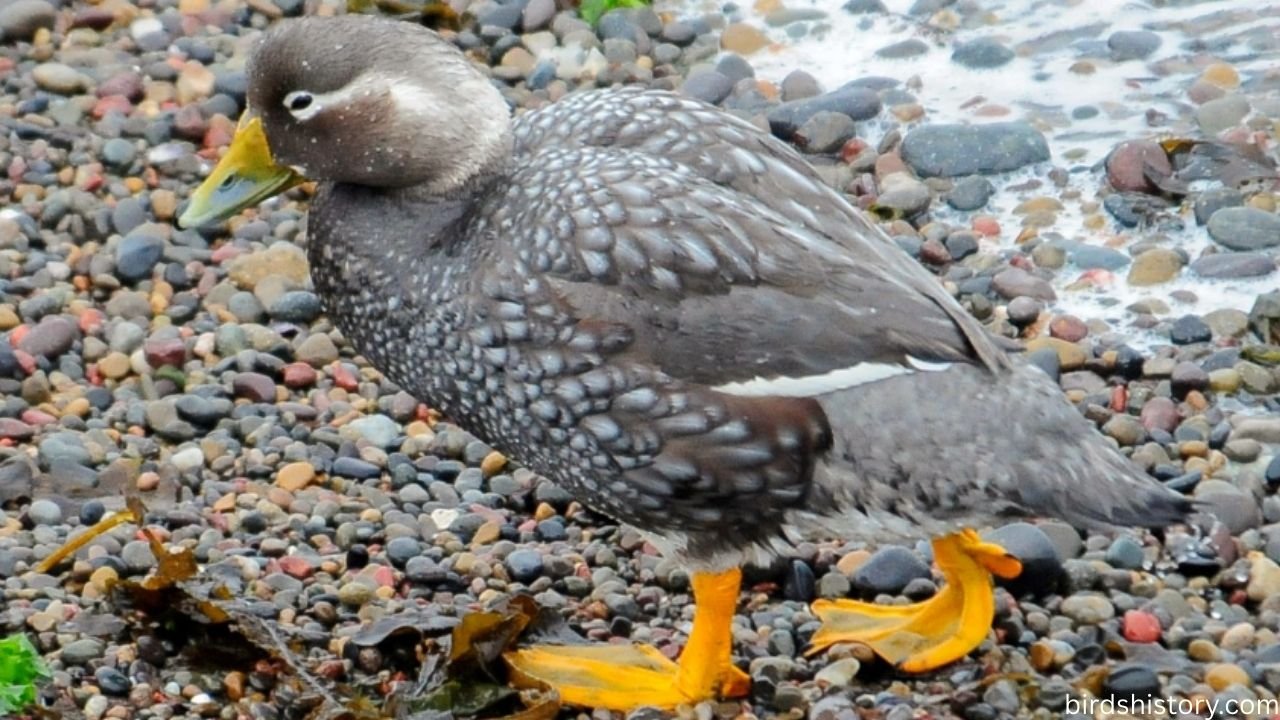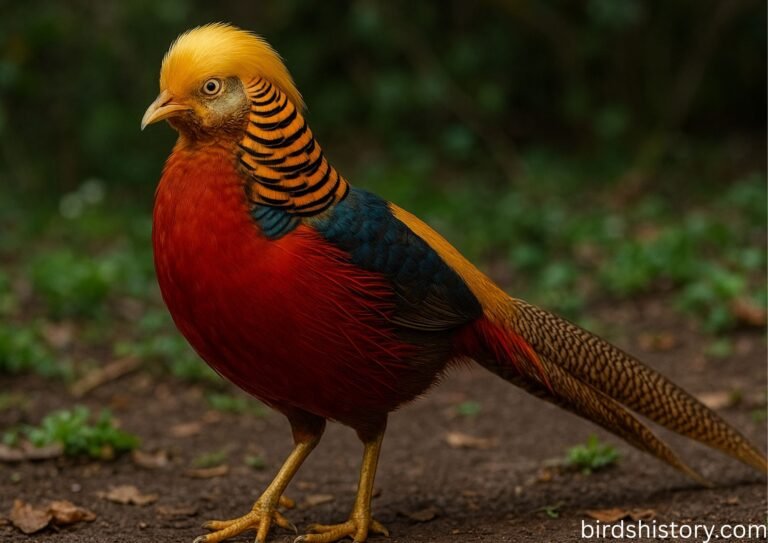White-Headed Steamer Duck: Nature’s Powerful Swimmer
Among the many fascinating and diverse bird species in South America, the White-headed Steamer Duck stands out as particularly unique. Known for its powerful swimming style and unusual inability to fly, this bird has captured the attention of ornithologists and nature enthusiasts alike.
Found primarily in Argentina, this duck is one of four species of “steamer ducks,” a group named for their peculiar way of propelling themselves through the water—thrashing their wings on the surface like the paddles of an old steamship. While many ducks are recognized for their migratory patterns or colorful plumage, the White-headed Steamer Duck stands out for its strength, aggression, and territorial behavior.
A surprising fact? These ducks are among the few birds that can reportedly kill other waterfowl their size or larger in territorial disputes. This unique blend of beauty, aggression, and adaptation makes the White-headed Steamer Duck a truly fascinating subject.
Taxonomy / Classification
Understanding the bird’s classification helps us see where it fits in the avian world:
- Common Name: White-headed Steamer Duck
- Scientific Name: Tachyeres leucocephalus
- Family: Anatidae
- Order: Anseriformes
- Class: Aves
Also read: /tasmanian-native-hen/
This species was first formally described in 1981, making it relatively new to ornithological literature compared to more widely known ducks.
Physical Description
The White-headed Steamer Duck is a large, heavy-bodied duck with distinctive features:
- Size: About 65–84 cm (25–33 inches) long
- Weight: Between 3–5 kg (6.5–11 lbs), making it one of the heaviest duck species
- Coloration:
- Males are known for their striking white heads (hence the name), contrasted with grayish bodies.
- Females are more subdued, usually having mottled brown heads with less pronounced white coloration.
- Beak: Yellowish to orange, strong and slightly hooked.
- Wings: Short and powerful but not suited for true flight. Instead, they aid in water propulsion.
- Feet: Large, webbed, and bright orange—built for swimming efficiency.
Their white-headed male plumage is the primary distinguishing feature from other steamer ducks.
Habitat and Range
- Geographic Range: Endemic to Argentina’s coastal regions, particularly along the Atlantic coastline.
- Preferred Habitat:
- Rocky coasts
- Shallow marine environments
- Bays and inlets with abundant food sources
- Migration: Unlike many duck species, the White-headed Steamer Duck is non-migratory, staying in its coastal habitats year-round.
This sedentary lifestyle is largely due to their limited flying ability—they are almost entirely flightless.

Diet and Feeding Habits
The White-headed Steamer Duck is primarily carnivorous, feeding on marine invertebrates.
- Diet Includes:
- Crustaceans (crabs, shrimps)
- Mollusks (mussels, clams)
- Small fish
- Aquatic insects
- Feeding Style:
- They are excellent divers, plunging beneath the surface to capture prey.
- Their strong, serrated bills allow them to crush shellfish.
- They often forage in shallow tidal pools or rocky coastal areas.
This diet provides the high-protein intake necessary for their muscular build.
Behavior and Lifestyle
Steamer ducks are often described as tough and territorial, and the White-headed species is no exception.
- Social Behavior: Typically found in pairs or small family groups. Males are fiercely territorial.
- Flight Ability: Essentially flightless, relying on swimming and running across the water.
- Swimming Style: Named for their unusual propulsion—they “steam” across the water using rapid wingbeats.
- Vocalizations:
- Loud, grating calls
- Males emit aggressive “growl-like” sounds during disputes
- Aggression: They are known to be highly combative, often fighting with other ducks, cormorants, and even gulls over territory.
This aggressive nature has earned them a reputation as one of the toughest waterfowl in South America.
Reproduction and Lifespan
- In Argentina, the breeding season for these birds typically occurs during the spring and summer, from October to January.
- Nesting:
- Nests are built near shorelines, usually hidden among grasses or rocky crevices.
- Constructed with down feathers and plant material.
- Eggs:
- Clutches usually contain 4–11 eggs.
- Eggs are large, cream-colored, and heavily guarded by the aggressive male.
- Incubation: Around 30–35 days.
- Lifespan: Estimated at 10–15 years in the wild, though data is limited due to its restricted range.
Females are primary caregivers, but males play a strong role in territory defense.
Predators and Threats
- Natural Predators:
- Large seabirds (like skuas and gulls) may prey on eggs or young chicks.
- Few natural predators target adults due to their size and aggression.
- Environmental Threats:
- Habitat loss from coastal development.
- Oil spills and pollution impacting marine ecosystems.
- Overfishing reducing food availability.
- Human Threats:
- Hunting is minimal, but incidental disturbance from boats and fisheries can stress populations.

Conservation Status
- IUCN Red List: Near Threatened
- Population Estimate: Fewer than 7,000 mature individuals.
- Threats to Survival:
- Restricted range (only in southern Argentina) makes them vulnerable.
- Habitat degradation due to pollution and human activity.
Conservation Efforts:
- Protected under Argentine law.
- Coastal conservation programs aim to preserve breeding habitats.
- Research is ongoing to monitor population trends.
Interesting Facts
- Steamer Duck Nickname: The “steamer” name comes from their wing-thrashing swimming that resembles an old steamship.
- Unlike most other ducks, the White-headed Steamer Duck has lost the ability to fly, instead evolving into a formidable swimmer and fighter.
- Aggressive Reputation: Reports claim they can fatally wound other waterfowl during fights, making them one of the most formidable ducks in existence.
- Recent Discovery: Only formally described in 1981, making it a relatively recent addition to ornithological classification.

Conclusion
The White-headed Steamer Duck is an incredible example of how species adapt to unique environments. While most ducks rely on flight for migration and safety, this bird has developed into a muscular, flightless swimmer that rules its coastal territories with fierce determination.
Endemic to Argentina, it faces conservation challenges due to its restricted range and human-driven threats. Still, its resilience and fascinating lifestyle make it an unforgettable bird worth learning about and protecting.
By studying species like the White-headed Steamer Duck, we gain deeper insight into the adaptability of nature and the importance of preserving fragile coastal ecosystems.
FAQs
1. Why is it called a Steamer Duck?
This species gets its name from its distinctive swimming method, which involves using its wings to beat the water like the paddles of a steamboat.
2. Can the White-headed Steamer Duck fly?
This species is exclusively found along the coasts of Argentina.
3. Where is it found?
This species is exclusively found along the coasts of Argentina.
4. What does it eat?
Mainly crustaceans, mollusks, and small fish.
5. How big is it?
Weighing as much as 5 kilograms (or 11 pounds), adult birds are among the heaviest of all duck species.
6. Are they aggressive?
Yes, males are known for their territorial aggression and can fight fiercely.
7. How many eggs do they lay?
Typically between 4–11 eggs per clutch.
8. Are they endangered?
They are classified as Near Threatened on the IUCN Red List.
9. How long do they live?
Their lifespan is about 10–15 years in the wild.
10. Why are they important to study?
They offer insight into flightless adaptations and highlight the importance of coastal conservation.







